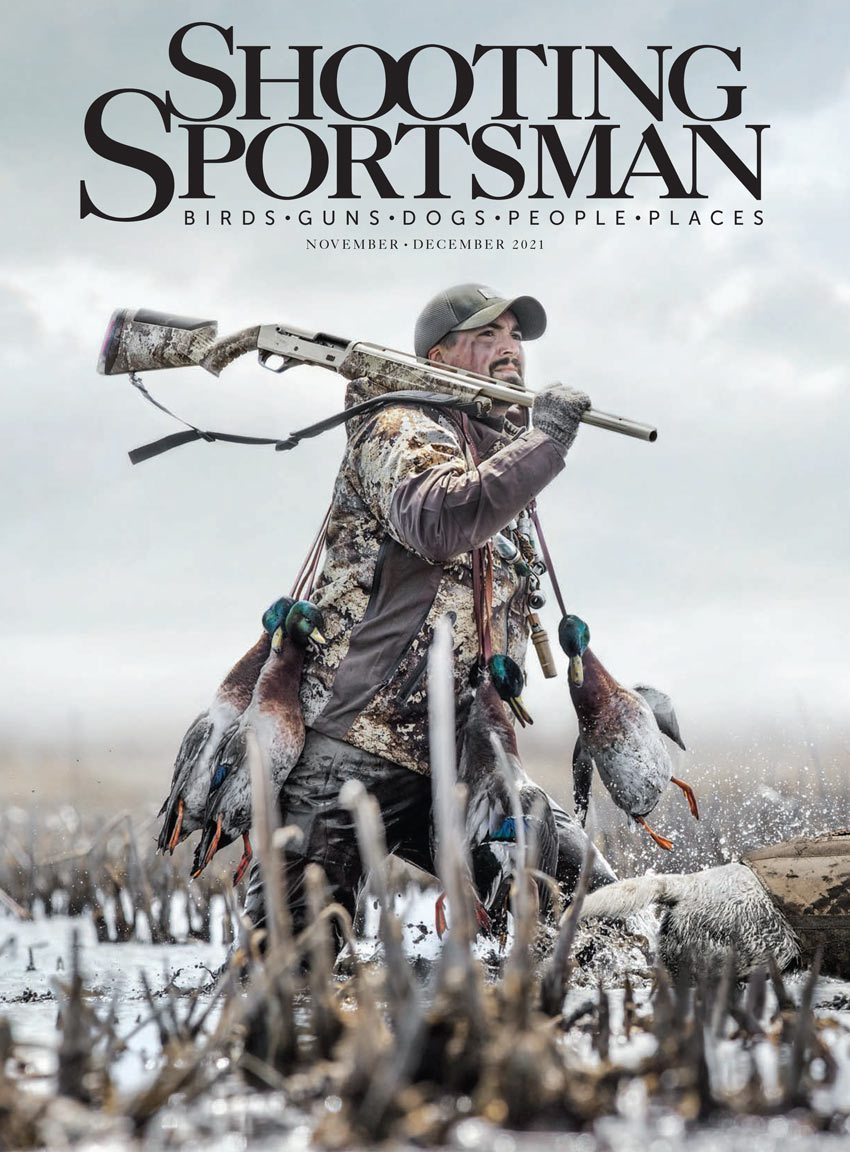As we enter the 2021-’22 waterfowling season, certain trends and conditions are going to direct and restrict our ammunition and gun choices perhaps more than in any season in the past couple of decades. A bit of common-sense knowledge will help get you through.
Ammo & Component Shortages
Consider first the ongoing ammunition and reloading-components shortages that began at the end of 2020. New-gun sales have yet to abate, and thus the demand for additional ammo for new-gun owners continues to be stronger than ever. As explained in my July/August column, this likely will continue to divert most ammo manufacturers’ shotshell efforts into making centerfire ammunition and, to a lesser extent, centerfire reloading components. Therefore, it is only realistic to expect that the current shotshell and component shortages are going to continue for many months.
To counteract this, shotgunners would be wise to get their names on one or more dealers’ waiting lists for factory-loaded ammo or reloading components. Shooters also are going to have to be vigilant in repeatedly checking with even the smallest dealers. All of them, big and small, will continue to periodically and unpredictably receive shipments. If you’re there when the shipments come in or are on a waiting list that hasn’t been cancelled, that’s your best bet for getting at least part of the factory ammo or reloading components you’re after.
Nontoxic Load Choices
As covered numerous times here but which bears repeating: In terms of nontoxic shotshells, required for all waterfowl hunting in North America, steel shot factory loads and handloads remain king, comprising better than 80 percent of all nontoxic-shotshell sales. Second are the very much more expensive but still popular—especially for long-range shooting—tungsten-composite loads. With higher densities than lead and especially steel, tungsten-composite loads offer greatly increased lethality for long-range shooting. Coming in a distant third but growing over the last three or four years are bismuth loads.
There are now at least five manufacturers offering a variety of bismuth loads in a variety of gauges and pellet sizes. And bismuth always has been available for reloading. Because bismuth shot is soft like lead but additionally is frangible, it does not pattern as well as steel or tungsten-composite loads. It is also lower in density than lead but higher than steel, which in the final analysis renders it perfectly acceptable for close- to medium-range waterfowling.
In steel one must always remember that a two-sizes-larger steel pellet is needed to deliver the same energy downrange as a lead pellet, whereas with bismuth shot a one-size-larger pellet is needed. With the very high-density tungsten-composite pellets, one usually can shoot a one- or two-sizes-smaller pellet to get the same job done as with lead shot.
Velocity & Recoil
The current trend in factory steel and most tungsten-composite and bismuth loads is to offer very high-velocity loads. I speak here of velocities exceeding 1,400 fps in steel and tungsten-composite and 1,325 fps in bismuth. As I have discussed here previously, it does little good to start a ball faster, as it simply slows down quicker; so pellets leaving the muzzle at greater than 1,400 fps basically have shed their increased velocities by the time they reach 40 yards. These increased velocities also degrade patterns, as they cause increased deformation to soft pellets like bismuth and a greater disturbance from muzzle-blast disruption to harder nontoxic pellets. Even more serious is that they greatly increase recoil, which always decreases shooting success.
So there is very little to be gained with the current fad of high-velocity loads. The common-sense waterfowler, especially older shooters who wisely have come to hate recoil, seek out modest-velocity loads, which have just as much lethality and usually better patterns than high-velocity loads. If they can’t find what they are looking for in factory loads, more and more shooters are reloading their own.
Pellet-Type Mixtures
Another trending fad is offering factory loads with two different pellet types loaded in them. A common mixture is steel and bismuth shot. Such loads primarily are made up of steel (usually 60 percent or more), with the lesser amount of the load comprised of bismuth shot. While this does help the lethality of the load slightly because of bismuth’s slightly greater density than steel’s, from my testing I have yet to find a steel-bismuth mixed load that offers significantly increased lethality over a pure steel or bismuth load of the correct pellet size for the bird being hunted. The only exception was HEVI-Shot’s now-discontinued original HEVI-Metal load, which at the time consisted of much-higher-density HEVI-Shot pellets on top of a primarily steel load.
Chokes
There is an amazing array of choke tubes on the market. I haven’t tested them all, but I have tested most of them. And I can tell you this: There isn’t a lot of difference among many of them. Just how your chosen nontoxic load and shot size will pattern with them can be determined only by pattern-testing. And if you choose not to do this, you are shooting your shotgun blind. All in all, my testing repeatedly has indicated that in most screw-in chokes, Modified tubes offer the broadest utility and lethal performance with the various nontoxic-pellet types. It therefore represents the best common-sense constriction for waterfowling.
That’s all for now, and all the best this season.
To consult with Tom Roster or to order his new Advanced Lead & Bismuth Shot Handloading Manual, his HEVI-Shot and HW 13 reloading manual, or his instructional shooting DVD, contact Tom Roster, 1190 Lynnewood Blvd., Klamath Falls, OR 97601; 541-884-2974, tomroster@charter.net.
Buy This Issue!





